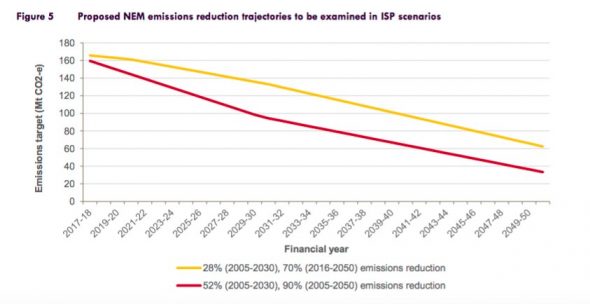The Australian Energy Market Operator has effectively thrown down the gauntlet to the federal government on its climate and technology assumptions, with the first installment of its mini white paper on energy, the Integrated System Plan (ISP).
In a discussion paper released on Tuesday, AEMO says the future grid will be dominated by wind, solar, and battery and other storage, and it is time to put together a co-ordinated plan.
In a “fast track” scenario that doubles climate ambition by 2030, AEMO dials in emission reductions far beyond those contemplated by the federal government: 70 per cent and 90 per cent in 2050.
And it outlines what extra transmission, storage and distributed energy the electricity system might need to make this happen.
The paper makes certain things very clear: wind and solar are the cheapest form of bulk storage, and planning must be done now to understand, and implement, the cheapest ways of incorporating this into the grid, and the best place to site them.
“NEM planners must prepare for and manage a rapid transformation of the power system, currently projected in the 2030s but which could occur earlier or later, as ~10 GW of coal generation is projected to retire,” the AEMO discussion paper says.
“The economics of wind and large-scale PV are projected to drive combined new generation of up to 25-30 GW by 2037,” as existing coal generation retires.
AEMO’s expects energy storage (either pumped hydro or battery storage) to reach 10 GW of maximum output and 20 GWh of storage capacity by 2037, although most of this will occur after 2030.
“The provision of firm and flexible dispatchable capability in future will depend on the relative cost trajectories of pumped hydro, batteries, solar thermal, and (including fuel costs and limitations), GPG (gas) and coal generation,” it notes.
Compare Solar & Battery Quotes
